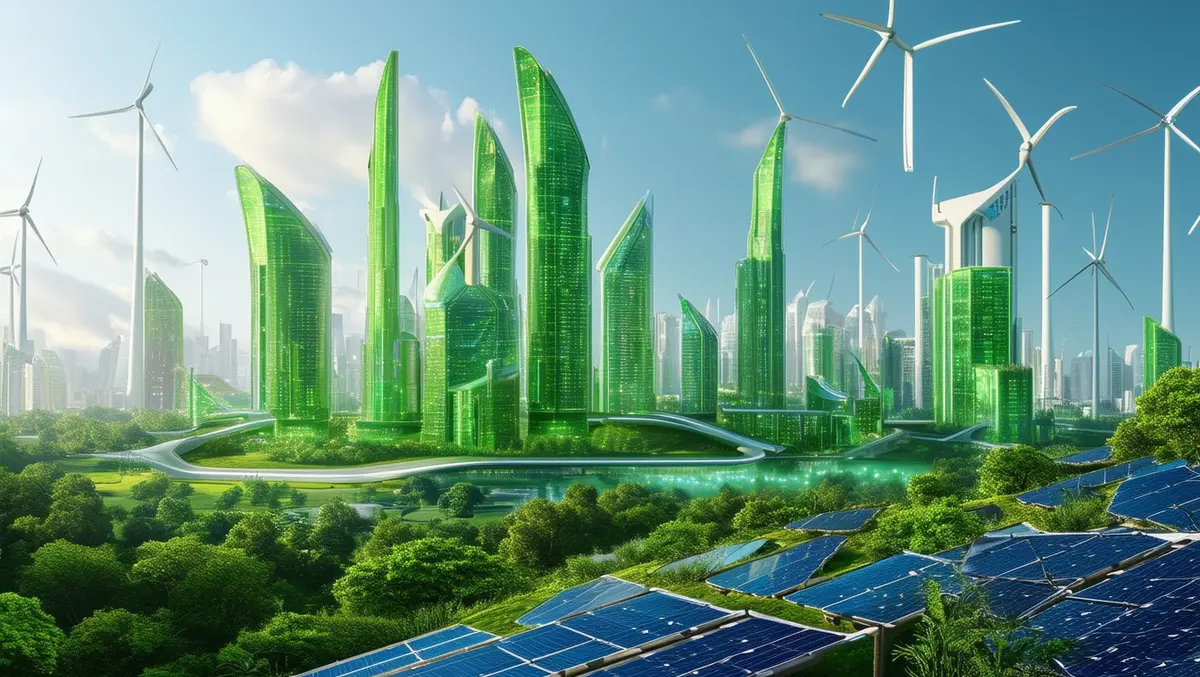
Green technology market to hit USD $122.69 billion by 2032
The green technology and sustainability market is projected to expand significantly, with a compound annual growth rate (CAGR) of 22.4% between 2022 and 2032. Forecasts suggest an increase from USD $16.25 billion in 2022 to USD $122.69 billion by 2032, according to a recent report from Future Market Insights.
This growth is anticipated to be driven by the sector's potential in developing countries and emerging regions. Companies at the forefront of innovation in green technology are expected to capture larger market shares. To address this expanding market, additional venture capital from both local and international sources will be needed to boost research and development (R&D) expenditure and business development.
The dual impact of the pandemic and climate change has significantly affected power systems, altering energy consumption patterns as a substantial part of the workforce shifted to remote work. This shift has spurred interest in green cloud computing, which relies heavily on green data centre technology.
Organisations aiming for a decarbonised economy are predicted to invest in long-term zero-carbon power contracts and smart, data-driven energy solutions. Increased consumer and industry interest in clean energy resources and the enhanced use of RFID sensors across various sectors have also spurred the adoption of green technology and sustainability products and services.
Market players are actively working to enhance their share by focusing on creating energy-efficient power supplies, integrated circuits, and devices that help reduce carbon footprints. There is a concerted effort to meet high environmental standards by producing solutions with low global warming potential and adhering to other environmental guidelines. This aligns with clients' demands for reducing energy consumption.
Key industry figures are committed to contributing towards the global achievement of Sustainable Development Goals (SDGs), seeing the SDG framework as a primary business driver over the next decade. This involves providing technology for information sensing, transmission, and analysis aimed at industrial growth markets, including aerospace, defence, industrial automation, environmental monitoring, electronics design, oceanic research, energy, medical imaging, and pharmaceutical research.
Additionally, organisations are integrating sustainable business strategies not only because it is ethically sound but also because it offers financial and competitive advantages. Market participants are aiding corporate leaders in embedding sustainability within every aspect of their operations, resulting in businesses that are fundamentally sustainable.
The burgeoning role of RFID sensors in green technology and sustainability presents numerous approaches to bolster green initiatives, such as efficient waste management and recycling. Enhanced consumer and business interest in renewable energy sources, coupled with the rising use of RFID sensors which help reduce carbon emissions, has further driven the market. The application of nanotechnology in manufacturing to further reduce waste also proves significant.
However, the high costs associated with green technology and sustainability solutions are potential barriers to market growth. Although solar and wind farms are cost-effective in terms of maintenance and fuel, substantial investments are required in developing technology-based products or solutions. Advanced technologies like artificial intelligence (AI), Internet of Things (IoT) sensors, and analytics, which are crucial for air quality monitoring and carbon footprint management, incur high maintenance costs.
Regionally, Europe is expected to hold the second-largest market share, driven by government programmes showcasing low-carbon technologies. The European Commission's plans to support energy storage, carbon capture, and grid solutions aim to promote a green recovery towards climate neutrality while revitalising the economy. European nations are already global leaders in various green technologies, including onshore and offshore wind power.
The Asia-Pacific region is anticipated to exhibit the highest CAGR during the forecast period, buoyed by a focus on integrating advanced technologies in commercial processes in countries like China, India, and Singapore. The Middle East, Africa, and South America are also expected to witness significant growth, supported by national climate policies and green energy initiatives.
The green technology and sustainability market is becoming increasingly competitive. Recent developments include Portland General Electric's sale of USD $150 million in green bonds to fund qualified green initiatives and Schneider Electric's introduction of Infrastructure of the Future, an integrated solution suite for smart and green infrastructure.


